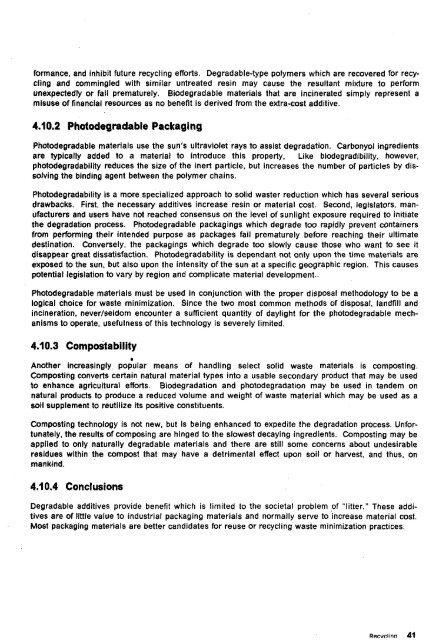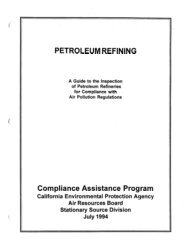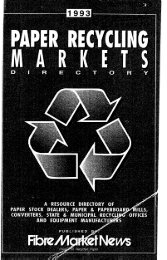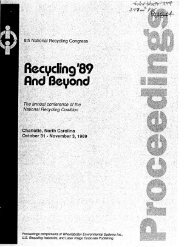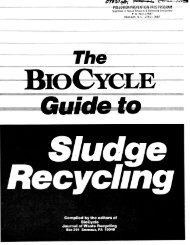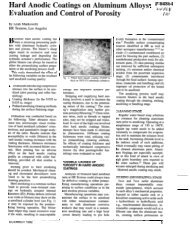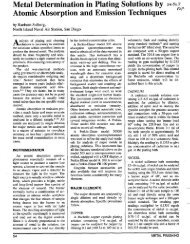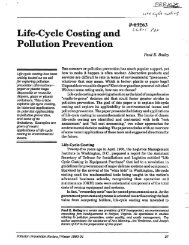Electronic Parts/Guidelines - infoHouse
Electronic Parts/Guidelines - infoHouse
Electronic Parts/Guidelines - infoHouse
Create successful ePaper yourself
Turn your PDF publications into a flip-book with our unique Google optimized e-Paper software.
formance. and inhibit future recycling efforts. Degradable-type polymers which are recovered for recy-<br />
cling and commingled with similar untreated resin may cause the resultant mixture to perform<br />
unexpectedly or fall prematurely. Biodegradable materials that are incinerated simply represent a<br />
misuse of financial resources as no benefit Is derived from the extra-cost additive.<br />
4.10.2 Photodegradable Packaging<br />
Photodegradable materials use the sun's ultraviolet rays to assist degradation. Carbonyol ingredients<br />
are typically added to a material to introduce this property, Like biodegradibility. however,<br />
photodegradability reduces the size of the inert particle, but increases the number of particles by dis-<br />
solving the binding agent between the polymer chains.<br />
Photodegradability is a more specialized approach to solid waster reduction which has several serious<br />
drawbacks. First, the necessary additives increase resin or material cost. Second, legislators, man-<br />
ufacturers and users have not reached consensus on the level of sunlight exposure required to initiate<br />
the degradation process. Photodegradable packagings which degrade too rapidly prevent containers<br />
from performing their intended purpose as packages fail prematurely before reaching their ultimate<br />
destination. Conversely, the packagings which degrade too slowly cause those who want to see it<br />
disappear great dissatisfaction. Photodegradabiiity is dependant not only upon the time materials are<br />
exposed to the sun, but also upon the intensity of the sun at a specific geographic region. This causes<br />
potential legislation to vary by region and complicate material development..<br />
photodegradable materials must be used in conjunction with the proper disposal methodology to be a<br />
logical choice for waste minimization. Since the two most common methods of disposal, landfill and<br />
incineration, neverlseldom encounter a sufficient quantity of daylight for the photodegradable mech-<br />
anisms to operate, usefulness of this technology is severely limited.<br />
4.10.3 Compostability<br />
Another Increasingly popular means of handling select solid waste materials is composting<br />
Composting converts certain natural material types into a usable secondary product that may be used<br />
to enhance agricultural efforts. Biodegradation and photodegradation may be used in tandem on<br />
natural products to produce a reduced volume and weight of waste material which may be used as a<br />
soil supplement to reutilize its positive constituents.<br />
Composting technology is not new, but is being enhanced to expedite the degradation process. Unfor-<br />
tunately, the results of composing are hinged to the slowest decaying ingredients. Composting may be<br />
applied to only naturally degradable materials and there are still some concerns about undesirable<br />
residues within the compost that may have a detrimental effect upon soil or harvest, and thus, on<br />
mankind.<br />
4.10.4 Conclusions<br />
Degradable additives provide benefit which is limited to the societal problem of ''litter.'' These addi-<br />
tives are of little value to industrial packaging materials and normally serve to .increase material cost.<br />
Most packaging materials are better candidates for reuse or recycling waste minimization practices,<br />
Recvclinn dl


